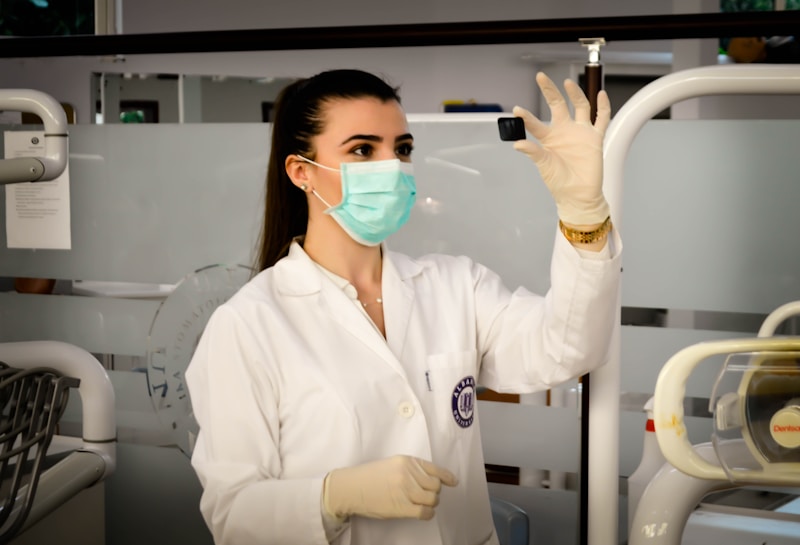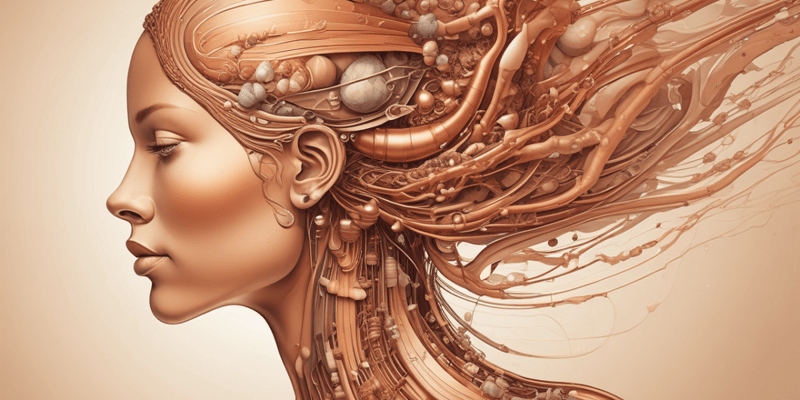25 Questions
Which mineral is required for the conversion of T4 to the more active form T3?
Selenium
What can result from under-ingestion of Iodine?
Goiter
What is the most common cause of hyperthyroidism?
Graves disease
Which condition can result from autoimmune destruction of TPO?
Hashimoto thyroiditis
What is Keshan disease?
A cardiomyopathy caused by eating foods produced from Se-deficient soil
Which mineral is present in ~25 human proteins as a constituent of selenoproteins?
Selenium
Which mineral is required for various enzymatic reactions, including phosphorylation and phosphodiester bond formation?
Magnesium
What is the main function of iodine in the body?
Synthesis of thyroid hormones
Which mineral is the most abundant intracellular anion, with 85% in bone and the rest in organic compounds?
Phosphorus
What is the primary role of copper in the body?
Component of ferroxidases and vital for the oxidation of iron
Which mineral plays essential structural and catalytic functions, including the formation of zinc fingers in proteins and the activity of various enzymes?
Zinc
What can result from a deficiency of PTH or vitamin D?
Bone demineralization
What is the main function of iron in the body?
Electron transport chain and hemoglobin synthesis
Which mineral is required for membrane potential maintenance?
Sodium
What can result from hypomagnesemia?
Muscle and nerve hyperexcitability
Which mineral is the most abundant in the body, with ~98% being found in bones?
Calcium (Ca2+)
Which mineral is a component of hydroxylapatite (Ca5[PO4]3OH), which makes up bones and teeth?
Phosphorus ([P] as inorganic phosphate [P i, or PO43−])
Which mineral is required in amounts <1 mg/day and is classified as ultratrace minerals?
Potassium (K+)
Which minerals are essential enzyme cofactors?
$ ext{Ca}^{2+}$ and $ ext{Mg}^{2+}$
What may result from overproduction of parathyroid hormone (PTH)?
$ ext{Ca}^{2+}$ elevation
Which mineral is involved in processes such as signaling, muscle contraction, and blood clotting?
Magnesium (Mg2+)
Which minerals are referred to as the microminerals or trace minerals?
Iron and Zinc
What are minerals required in amounts between 1 and 100 mg/day referred to as?
Macrominerals
Which mineral makes up components of hydroxylapatite along with phosphorus?
Calcium (Ca2+)
Which mineral binds to a variety of proteins including calmodulin, phospholipase A2, and protein kinase C and alters their activity?
Calcium (Ca2+)
Study Notes
o Hypocalcemia can result from a deficiency of PTH or vitamin D, leading to bone demineralization. 45 Phosphorus is the most abundant intracellular anion, with 85% in bone and the rest in organic compounds. Phosphate is supplied as ATP for kinases and as Pi for phosphorylases, with hormonal regulation by calcitriol and PTH.
o Magnesium is required for various enzymatic reactions, including phosphorylation and phosphodiester bond formation, with about 60% in bone. Hypomagnesemia can result in muscle and nerve hyperexcitability, and hypermagnesemia in hypotension.
o Sodium, chloride, and potassium maintain water balance, osmotic equilibrium, acid–base balance, and membrane potential. The concentration differential of sodium and potassium across cell membranes is maintained by the Na+/K+ ATPase.
o Microminerals (trace minerals) include copper, iron, manganese, and zinc, required by adults in amounts between 1 and 100 mg/day.
o Copper is a component of ferroxidases, several enzymes, and is vital for the oxidation of iron. Dietary deficiency is rare, with genetic causes like Menkes syndrome (systemic copper deficiency) and Wilson disease (copper overload).
o Iron is needed for multiple proteins, the electron transport chain, hemoglobin, and the cytochromes. Free iron is toxic, with dietary sources including animal products and plant nonheme forms. Iron storage is in the form of ferritin and hemosiderin, with iron deficiency leading to microcytic, hypochromic anemia, and iron overload due to genetic defects or accidental ingestion.
o Zinc plays essential structural and catalytic functions, including the formation of zinc fingers in proteins and the activity of various enzymes. Severe deficiency is seen with intestinal malabsorption disorders like acrodermatitis enteropathica.
o Chromium and fluorine are essential, with chromium potentiating insulin action, and fluorine added to water to reduce dental caries.
o The ultratrace minerals, including iodine, selenium, and molybdenum, are required by adults in amounts less than 1 mg/day.
o Iodine is essential for the synthesis of thyroid hormones, with circulating iodide taken up in the thyroid gland and iodinated to form thyroglobulin, which is then secreted as T3 and T4.
o The iodination of thyroglobulin forms monoiodinated and diiodinated tyrosine and the coupling of two diiodinated tyrosine molecules, creating T4 and the coupling of one mono- and one diiodinated tyrosine, creating T3.
Learn about the importance of minerals in the body and their role in processes such as bone formation, nerve conduction, and muscle contraction. Explore how minerals function as essential enzyme cofactors and micronutrients required in small amounts.
Make Your Own Quizzes and Flashcards
Convert your notes into interactive study material.
Get started for free



